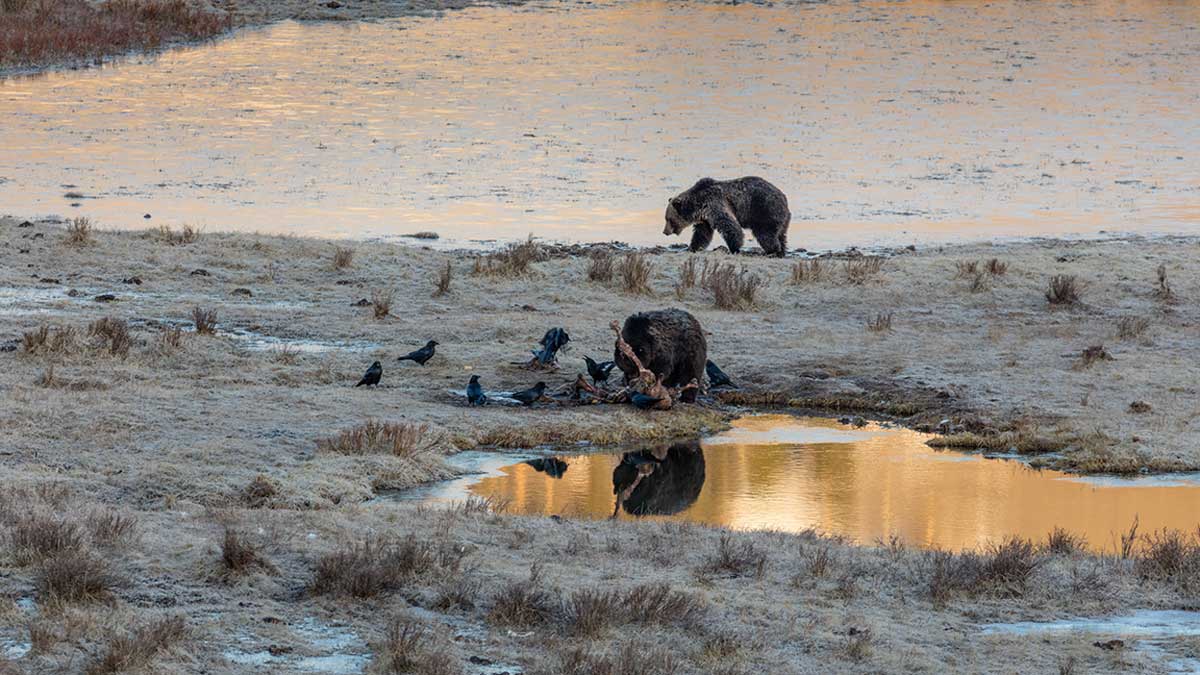Below is a news release from the University of Montana. The Rocky Mountain Elk Foundation maintains that state agencies should manage grizzly bears just as they manage elk, wolves, deer, mountain lions and other wildlife.
For an animal whose population barely tops 2,000, Montana’s grizzly bears hold an outsized presence in the psyche and politics of the Treasure State.
Small wonder, then, that Montanans, though likely never to have seen a grizzly, hold strong opinions about the legendary bruins – opinions they readily shared for a study by the University of Montana and Montana Fish, Wildlife & Parks (FWP), which was just published in the journal Conservation Science and Practice.
“We got about a 40% response rate from the 5,350 surveys we sent across the state, which was huge,” said study author Holly Nesbitt, a Ph.D. student in UM’s Human Dimensions Lab of the W.A. Franke College of Forestry & Conservation. “We received responses from every corner of Montana, allowing us to make estimates about how all Montanans feel about grizzly bear management, which is pretty important to the state.”
And, it turns out, timely.
This month, FWP wraps up public comment on its draft management plan for Montana’s growing grizzly population, a plan that could have enormous implications should the U.S. Fish and Wildlife Service delist grizzly bears and turn bear management over to the state. Grizzly bears have been under federal oversight since 1975, when they were listed as threatened under the Endangered Species Act.
The survey results will be factored into the FWP’s final recommendations to the state.
And what do Montanans think about the official state animal?
“It was surprising. We found overwhelming support for grizzly bears,” said Alex Metcalf, a co-author of the study and associate professor of human dimensions at UM. “We found 80% to 90% of respondents think bears have a right to exist – that they make Montana special and that we need to learn to live with them. But also, that over 80% want to see some form of grizzly hunting allowed.
“Those are crazy numbers,” he added. “You can’t get 80% to 90% of people to agree on anything.”
But beyond documenting these current sentiments, the study’s analysis allowed Nesbitt and her co-authors to identify what factors helped shape those attitudes.
“We often hear about a rural-urban divide, or that direct, negative experiences with grizzlies cause people to hate bears,” Nesbitt explained. “However, when we controlled for multiple possible factors, we see these old assumptions don’t hold up and that other, more important factors emerge.”.
For example, the researchers found that hunters, and those who believed hunting should be used to control grizzly bear conflict, were most likely to believe that grizzly populations were too high. And rather than direct experience, it was “vicarious experience” or hearing about others’ property damage that led folks to believe there were too many grizzlies in the state. On the other hand, those who most trusted FWP and held positive attitudes toward grizzlies were most likely to say grizzly populations were too low.
Delving into these sometimes-tricky interactions between humans and the natural world is at the heart of research conducted by UM’s Human Dimensions Lab, which conducts studies on such wide-ranging subjects as climate data and its relevance for ranchers, as well as community responses to environmental restoration projects.
Emotions play a key role in many of the results they see and never more so than for grizzlies, said study co-author Libby Metcalf, the Joel Meier Distinguished Professor of Wildland Management and associate dean of the UM forestry college.
“It’s important to remember that people have emotions attached to these animals,” Libby Metcalf said. “You can’t divorce management of the species from that emotional component.”
These results, Nesbitt added, hold true regardless of respondent’s education, location in the state, gender and profession – ranchers included – and start to define a happy medium or middle ground.
“We call it the ‘Goldilocks Zone,’ where those who said there are too few or too many bears tended to be less satisfied with management of the population,” Nesbitt said. “This wasn’t terribly surprising to us, but it’s a good reminder that when people have a comfort level with the way grizzly bears are being managed, the better they can tolerate bears on the landscape.
“So, the trick facing Montana is to find that sweet spot where grizzly populations are ‘just right’ – where bear populations are healthy and the people of Montana are happy in their coexistence with those grizzlies,” she added.
Alex Metcalf agreed: “We hope these results will help bolster people’s satisfaction with grizzlies in parallel with conservation efforts because ultimately successful grizzly bear recovery will depend on Montanans’ continued support.”
(Photo source: Montana Fish, Wildlife and Parks)
